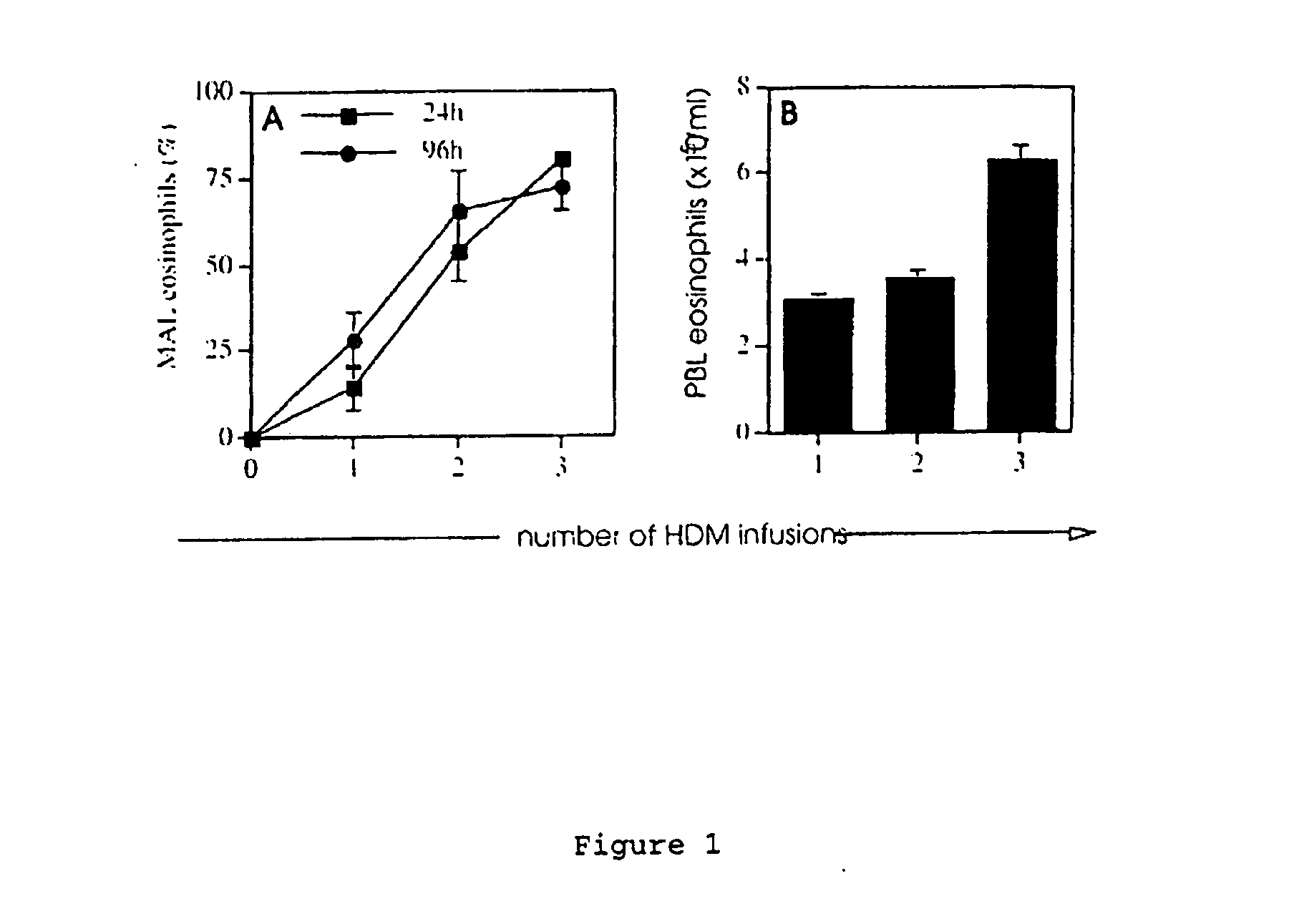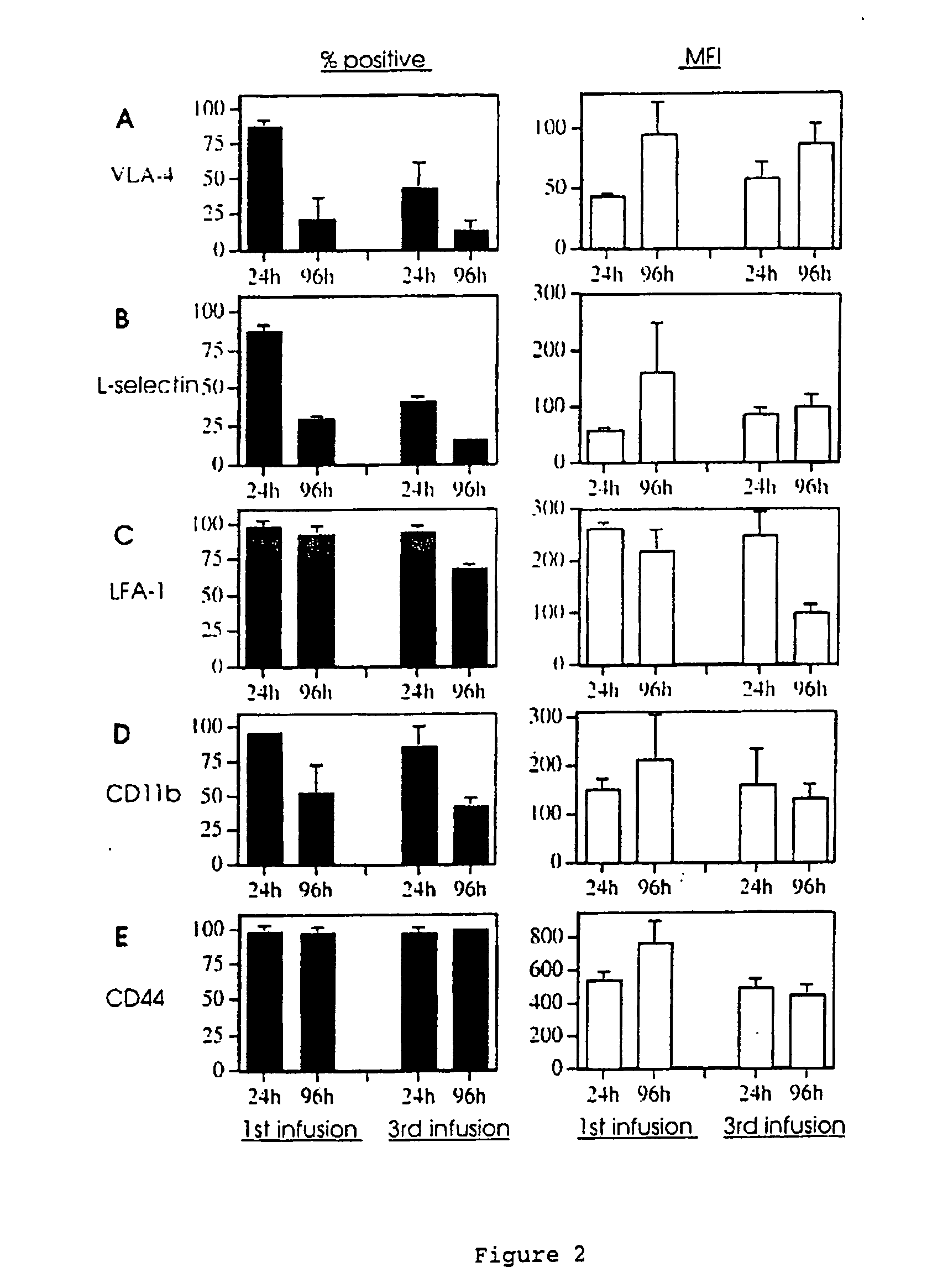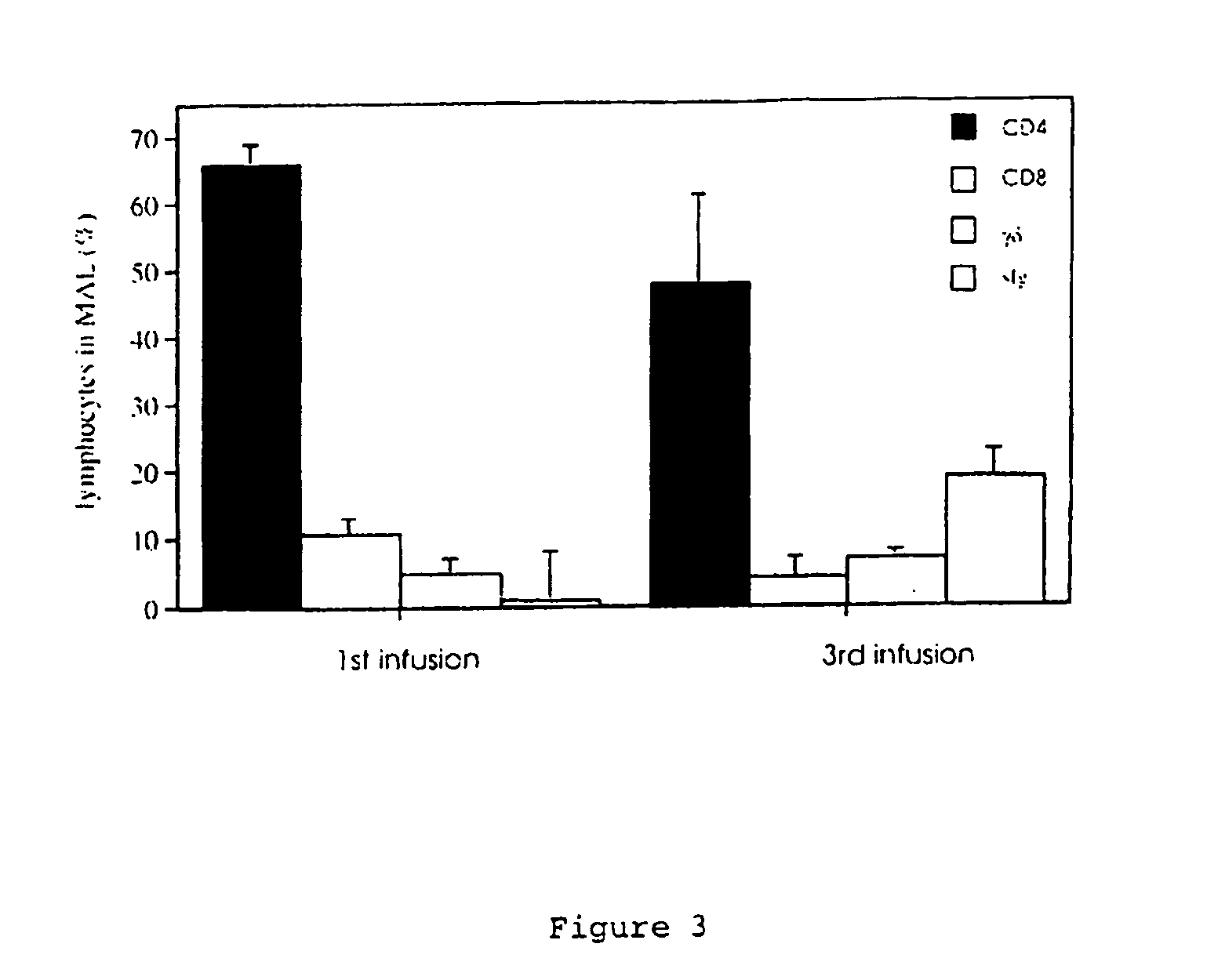Animal model for allergy
a technology of animal models and helminths, applied in animal husbandry, animal/human peptides, peptide sources, etc., can solve the problems of difficult to obtain large numbers of inflammatory cells, asthma is a particularly serious health issue, and granule proteins are known to be toxic to helminths, etc., and achieve significant greater ease of study
- Summary
- Abstract
- Description
- Claims
- Application Information
AI Technical Summary
Benefits of technology
Problems solved by technology
Method used
Image
Examples
example 1
[0081] Sheep Mammary Infusion Model
[0082] Sheep were primed by 3-4 infusions of the mammary glands at 2-week intervals with 5 ml of a soluble preparation of HDM (0.2 mg / ml in sterile PFS), then rested for 3-4 weeks prior to the experimental challenge. Mammary infusions were performed using a 10 ml syringe fitted with a blunted 22-gauge needle. The tip of the needle was gently rotated into the teat canal, followed by infusion of the HDM preparation. At 24 h and 96 h post-HDM challenge, MAL cell suspensions (2-5×107 cells) were gently “milked” from the mammary glands after the infusion of 8 ml sterile PFS. On ice, MAL cells were washed and centrifuged (400 g, 5 min) twice with 1% bovine serum albumin (BSA, fraction V; Trace Biosciences, VIC, Australia) in phosphate-buffered saline (PBS) prior to immunostaining as described below.
[0083] Immediately preceding the collection of MAL cells, 20 ml blood was drawn from the jugular vein of sheep into a plastic tube containing ethylenediamin...
example 2
[0085] Allergic-type Responses to HDM in the Mammary Gland
[0086] Sheep were primed by three HDM infusions of the mammary glands at 2-week intervals. MAL cell suspensions were gently milked from the glands at 24 h and 96 h following each HDM infusion, and cytospots were prepared and stained with Wright's stain for the enumeration of eosinophils.
[0087] Peripheral blood (PBL) was collected prior to infusion; eosinophils were enumerated using a Coulter counter, and blood smears were prepared and stained with Wright's stain. HDM infusions into the mammary gland induced a rapid recruitment of eosinophils into the MAL, increasing from 5-40% of cells after the first infusion to 75-90% after 3-4 infusions, as shown in FIG. 1A. The percentage of eosinophils recovered in the MAL was comparable at the 24 h and 96 h time points over the priming period. The rapid and progressive recruitment of eosinophils into the MAL was accompanied by elevated blood eosinophils, as shown in FIG. 1B.
[0088] Th...
example 3
[0091] Sheep Lung Allergic Sensitisation Model
[0092] A schematic representation of the general sensitisation and lung challenge protocol is shown in FIG. 5. Groups of 5 sheep were immunised with a soluble preparation of HDM (0, 5, 50 or 500 μg in saline / Alum; 1:1); 3×subcutaneous (s.c.) injections made into the upper foreleg at 2 week intervals. Sheep were then rested for 2 weeks prior to a single lung challenge with HDM on Day 42 of the experiment. Serum samples were collected prior to each injection and at 7d and 14d after the last injection for assessment of HDM-specific serum antibody responses. During the experimental lung challenge procedure, unsedated sheep were restrained in a custom-made body sheath and head harness, and tethered in a modified metabolism cage.
[0093] Allergen challenge was administered directly to the lungs using a fibre-optic bronchoscope (Pentax FG-16X) for localised delivery of a soluble preparation of HDM (1 mg in 5 ml PFS at 39° C.) deep into the left...
PUM
| Property | Measurement | Unit |
|---|---|---|
| pH | aaaaa | aaaaa |
| time | aaaaa | aaaaa |
| time | aaaaa | aaaaa |
Abstract
Description
Claims
Application Information
 Login to View More
Login to View More - R&D
- Intellectual Property
- Life Sciences
- Materials
- Tech Scout
- Unparalleled Data Quality
- Higher Quality Content
- 60% Fewer Hallucinations
Browse by: Latest US Patents, China's latest patents, Technical Efficacy Thesaurus, Application Domain, Technology Topic, Popular Technical Reports.
© 2025 PatSnap. All rights reserved.Legal|Privacy policy|Modern Slavery Act Transparency Statement|Sitemap|About US| Contact US: help@patsnap.com



